Whirlpool C94, C124, CF94, CF124 INSTALLATION

GB
FROSTIG |
DE |
||
|
|
|
|
|
|
|
FR |
|
|
|
IT |
BC155 |
|
||
BC219 |
|
||
BC118/18 |
|
||
BC184/18 |
|
||
|
|
|
|
|
|
|
|
ENGLISH 4
DEUTSCH 12
FRANÇAIS 21
ITALIANO 31

ENGLISH |
4 |
Contents
Safety information |
4 |
What to do if… |
9 |
Product description |
6 |
Technical data |
10 |
First use |
7 |
Environmental concerns |
11 |
Daily use |
7 |
|
|
Cleaning and maintenance |
8 |
|
|
Safety information
Before first use
This appliance is intended to be used in household.
To ensure best use of your appliance, carefully read this User Manual which contains a description of the product and useful advice.
Keep these instructions for future reference.
1.After unpacking the appliance, make sure it is not damaged and that the door closes properly.
Any functional fault must be reported to IKEA After Sales Service as soon as possible.
2.Wait at least two hours before switching the appliance on, to ensure that the refrigerant circuit is fully efficient.
3.The electrical installation and the electrical connection must be carried out by a qualified technician according to the manufacturer's instructions and in compliance with the local safety regulations.
4.Clean the inside of the appliance before using it.
Precautions and general recommendations
Installation and connection
•The appliance must be handled and installed by two or more persons.
•Be careful not to damage the floors (e.g. parquet) when moving the appliance.
•During installation, make sure the appliance does not damage the power cable.
•Make sure the appliance is not near a heat source.
•To guarantee adequate ventilation, leave a space on both sides and above the appliance and follow the installation instructions.
•Keep the appliance ventilation openings free.
•Do not damage the appliance refrigerant circuit pipes.
•Install and level the appliance on a floor strong enough to take its weight and in a place suitable for its size and use.
•Install the appliance in a dry and well-ventilated place. The appliance is arranged for operation in places where the temperature comes within the following ranges, according to the climatic class given on the rating plate. The appliance may not
work properly if it is left for a long time at a temperature outside the specified range.
Climatic Class |
Amb. T. (°C) |
Amb. T. (°F) |
SN |
From 10 to 32 |
From 50 to 90 |
N |
From 16 to 32 |
From 61 to 90 |
ST |
From 16 to 38 |
From 61 to 100 |
T |
From 16 to 43 |
From 61 to 110 |
•Make sure the voltage specified on the rating plate corresponds to that of your home.
•Do not use single/multi adapters or extension cords.
•For the water connection, use the pipe supplied with the new appliance; do not reuse that of the previous appliance.
•Power cable modification or replacement must only be carried out by qualified personnel or by After-sales Service.
•It must be possible to disconnect the appliance from the power supply by unplugging it or by means of a mains two-pole switch installed upstream of the socket.
Safety
•Do not store explosive substances such as aerosol cans with a flammable propellant in this appliance.
•Do not store or use petrol, flammable liquids or gas in the vicinity of this or other electrical appliances. The fumes can cause fires or explosions.
•Do not use mechanical, electric or chemical means other than those recommended by the Manufacturer to speed up the defrost process.
•Do not use or place electrical devices inside the appliance compartments if they are not of the type expressly authorised by the Manufacturer.
•This appliance is not intended for use by persons (including children) with reduced physical, sensory or mental capabilities, or lack of experience and knowledge, unless they have been given supervision or instruction concerning use of the appliance by a person responsible for their safety.
•To avoid the risk of children becoming trapped and suffocating, do not allow them to play or
ENGLISH |
5 |
hide inside the appliance.
•Do not swallow the contents (non-toxic) of the ice packs (in some models).
•Do not eat ice cubes or ice lollies immediately after taking them out of the freezer since they may cause cold burns.
Use
•Before carrying out any maintenance or cleaning operation, unplug the appliance or disconnect it from the power supply.
•All appliances equipped with an automatic icemaker and water dispenser must be connected to a water supply that only delivers drinking water (with mains water pressure of between 0.17 and 0.81 Mpa (1.7 and 8.1 bar)). Automatic icemakers and/or water dispensers not directly connected to the water supply must be filled with drinking water only.
•Use the refrigerator compartment only for storing fresh food and the freezer compartment only for storing frozen food, freezing fresh food and making ice cubes.
•Do not store glass containers with liquids in the freezer since they may burst.
The Manufacturer declines any liability if the above advice and precautions are not respected.
Cleaning, sanitization and maintenance of the ice and water dispenser (if present)
Failure to observe the sanitization instructions provided may compromise the hygiene and safety of water dispensed.
•When using the appliance for the first time, discard the first 9-14 litres of water, equivalent to 6-7 minutes of dispensing (not necessarily consecutive, but before initial consumption) and discard the ice produced in the first 24 hours.
•Reposition the removable water dispenser (if present), ensuring your hands are hygienically clean.
•Periodically clean the ice bucket or drawer under running water only.
•Every six months, sanitize the water and ice dispenser system using a food grade disinfectant solution (with sodium hypochlorite) which does not taint the appliance materials. Rinse with water before use.
•Replacement of any parts of the ice and water dispenser must be carried out using original spare parts provided by the Manufacturer.
•Any work on the appliance must be carried out by a qualified technician or the After-sales Service.

ENGLISH |
6 |
Product description
Carefully read the operating instructions before |
Refrigerator compartment |
using the appliance. |
(for storage of fresh food and beverages) |
BC184/18
BC118/18
6 |
7 |
1 |
4 |
5 |
2 |
3 |
1 Shelves (partly height adjustable)
2 Crispers
3Refrigerator inner door with: (if supplied) adjustable door trays
4 Pull-out defrost water drain
5 Rating plate (at the side of the crisper)
Freezer compartment (if supplied)
(marked with the symbol for storing fresh food, frozen food and making ice cubes)
6 Freezer section
7 Controls
 Least cold zone
Least cold zone
 Intermediate temperature zone
Intermediate temperature zone
 Coldest zone
Coldest zone
Features, technical information and images may vary depending on model
BC219 |
BC155 |
7 |
1 |
4 |
5 |
2 |
3 |
Accessories (if present)
Egg tray |
Ice tray |
1x |
1x |
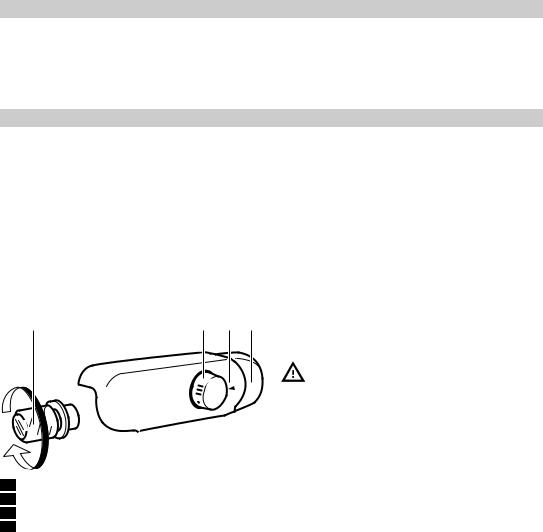
ENGLISH
First use
Connect the appliance to the mains power supply. The ideal temperatures for preserving food have already been set at the factory (3-5/MED).
7
Note: After switching the appliance on, it will be necessary to wait for 2 to 3 hours before a temperature suitable for a standard appliance load is reached.
Daily use
Operation of the refrigerator and freezer compartment (if present)
•Use the thermostat knob to adjust the temperature of the refrigerator compartment (or both compartments, depending on the model), as shown in figure 1. Move the knob to the position to switch the whole appliance off.
position to switch the whole appliance off.
Note: The ambient temperature, frequency of door opening and position of the appliance can affect the temperatures inside the two compartments. These factors must be taken into consideration when setting the thermostat.
D |
|
A |
|
C |
|
B |
fig. 1
A Thermostat control knob
B Light button
C Thermostat position setting notch
D Light bulb (see instructions near the light bulb)
Thermostat on 1/MIN: Low refrigeration level Thermostat on 3-5/MED: Medium refrigeration Thermostat on 7/MAX: Maximum refrigeration Thermostat on : Both refrigeration and illumination are switched off.
: Both refrigeration and illumination are switched off.
To remove the light bulb turn anticlockwise as shown in figure 1.
Refrigerator compartment
Refrigerator compartment defrosting is completely automatic. Droplets of water on the rear wall inside the refrigerator compartment indicate that the automatic defrost phase is in progress. The defrost water is automatically run into a drain hole and collected in a container, where it evaporates.
Fan (if provided)
The fan operates automatically. The fan ensures a more consistent distribution of the temperature inside the refrigerator compartment, with better preservation of food and reduction of excess humidity. Do not obstruct the suction zone with food. The fan is only active when the motor is in operation.
Caution! The refrigerator accessories must not be placed in a dishwasher.
Freezer compartment (if present)
This appliance is a refrigerator with a star rating freezer compartment. Packed frozen foods can be stored for the period indicated on the packing. Fresh food can also be frozen, ensuring that any contact with already frozen food is avoided. The quantity of fresh food that can be frozen in a 24 hour period is given on the rating plate. Re-freezing of partially defrosted food is not recommended. This food should be consumed within 24 hours. For further information on freezing fresh food, refer to the quick guide.
Freezing fresh food
Place the fresh food to be frozen inside the freezer compartment. Avoid direct contact with already frozen food. To freeze the quantity of food shown on the serial tag, remove the top drawer and place the food directly on the rack.
Making ice cubes (if provided)
Fill the ice cube tray up to 2/3 with water and place in the freezer compartment. Do not use sharp or pointed objects to detach the tray.
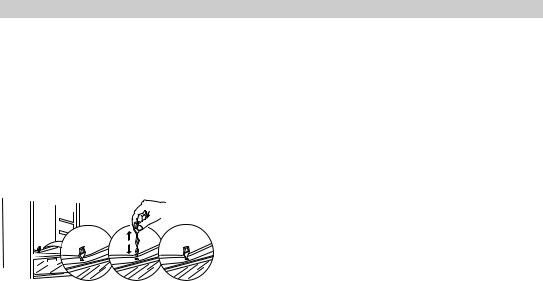
ENGLISH |
8 |
Cleaning and maintenance
Regularly clean the appliance using a cloth and a solution of warm water, with some soft detergent suitable for cleaning the inside of the refrigerator compartment. Do not use abrasive detergents or tools. To ensure continuous and correct flow of defrost water, regularly clean the inside of the draining hole on the back of the refrigerator near the fruit and vegetable drawer, using the tool provided (see fig.1).
Before carrying out any cleaning or maintenance operation, unplug the appliance or disconnect it from the power supply.
fig. 1
Defrosting the freezer compartment
The freezer should be defrosted once or twice a year or when excessive frost is present (3 mm thickness).
The formation of frost is normal. The amount and rate at which frost accumulates depends on room conditions and how often the door is open.
To defrost the unit, switch off the freezer compartment or the whole appliance, depending on the model, and remove all food products.
Clean the inside of the freezer. Rinse and dry thoroughly. Switch the freezer compartment, or the whole appliance, back on and store the food inside.
Storing food
Wrap food so that no water, moisture or condensate can enter; this will prevent odours or aromas going from one part to another in the refrigerator, ensuring better preservation of frozen foods.
Never place hot food in the freezer. Cooling hot foods before freezing saves energy and prolongs the life of the appliance.
If the appliance is not going to be used
Disconnect the appliance from the power supply, remove all the food, defrost and clean. Leave the doors open enough for air to circulate inside the compartments. This will prevent the formation of mould and bad odours.
In case of power failures
Keep the doors of the appliance closed. In this way the stored food will stay cold as long as possible. Do not refreeze partially thawed food, consume it within 24 hours.
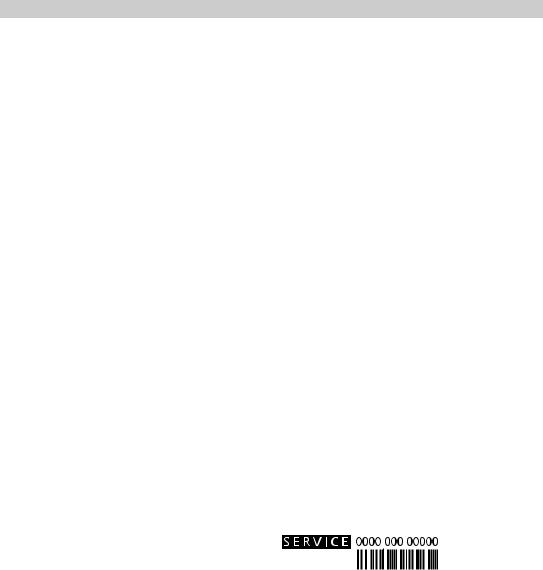
ENGLISH |
9 |
What to do if…
Problem |
Possible cause |
Solution |
The appliance does not |
There might be a problem with the |
Check that: |
operate |
electric power supply to the |
• there isn't a power supply failure |
|
appliance. |
• the power plug is correctly inserted in |
|
|
the power socket and the two-pole |
|
|
switch, if present, is in the correct |
|
|
position (on) |
|
|
• the electric circuit safety devices |
|
|
installed in the house are fully functional |
|
|
• the power supply cable is not broken |
|
|
|
The inside light does |
The lamp might need replacing. |
Disconnect the appliance from the electric |
not work. |
|
power supply, check the lamp and |
|
|
replace with a new one if necessary |
|
|
(see "Daily use"). |
|
|
|
The temperature inside |
There may be several causes |
Check that: |
the compartments is |
(see "Solutions") |
• The doors are closed correctly |
not cold enough. |
|
• The appliance is not placed near a heat |
|
|
source. |
|
|
• the temperature set is appropriate. |
|
|
• Air circulation through the ventilation |
|
|
grills at the bottom of the appliance is |
|
|
not obstructed. |
|
|
|
There is water at the |
The defrost water drain is obstructed. |
Clean the defrost water drain hole (see |
bottom of the |
|
"Cleaning and maintenance"). |
refrigerator |
|
|
compartment |
|
|
|
|
|
Note:
•Gurgling, hissing and humming noises from the refrigerating system are normal.
Before contacting the After-sales service:
Switch the appliance on again to see if the problem has disappeared. If not, switch it off again and repeat the operation after an hour.
If your appliance still does not work properly after carrying out the checks listed in the troubleshooting guide and switching the appliance on again, contact the After-sales service, clearly explaining the problem and specifying:
•the type of fault;
•the model;
•the type and serial number of the appliance (given on the rating plate);
•the Service number (the number after the word SERVICE on the rating plate inside the appliance).
Note:
Reversing of appliance door opening is not covered by the warranty.
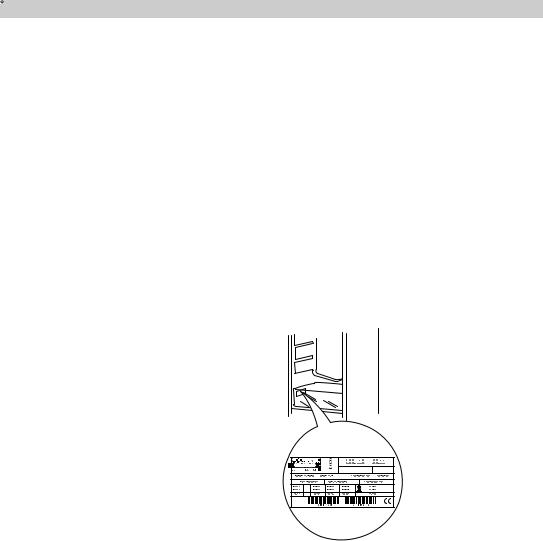
ENGLISH |
10 |
Technical data
Dimensions |
BC219 |
BC184/18 |
BC155 |
BC118/18 |
Height |
1221 |
1221 |
874 |
874 |
Width |
540 |
540 |
540 |
540 |
Depth |
550 |
550 |
550 |
550 |
Net Volume (l) |
|
|
|
|
Fridge |
219 |
184 |
155 |
118 |
Freezer |
- |
18 |
- |
18 |
Defrost system |
|
|
|
|
Fridge |
Automatic |
Automatic |
Automatic |
Automatic |
Freezer |
- |
- |
- |
- |
Star Rating |
- |
4 |
- |
4 |
Rising Time (h) |
- |
10 |
- |
10 |
Freezing Capacity (kg/24h) |
- |
2 |
- |
2 |
Energy consumption (kwh/24h) |
0,35 |
0,61 |
0,33 |
0,53 |
Noise level (dba) |
35 |
36 |
35 |
36 |
Energy class |
A+ |
A+ |
A+ |
A+ |
The technical information is situated in the rating plate on the internal side of the appliance and in the energy label
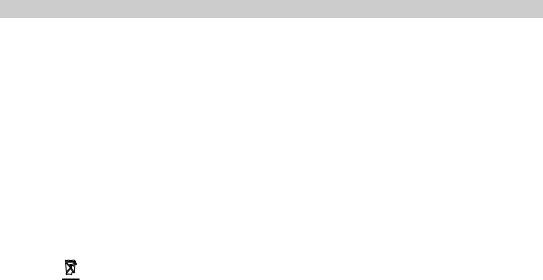
ENGLISH
Enviromental concerns
1. Packing 
The packing material is 100% recyclable and bears the recycling symbol. For disposal, comply with the local regulations. Keep the packing materials (plastic bags, polystyrene parts, etc.) out of the reach of children, as they are a potential source of danger.
2. Scrapping/Disposal
The appliance is manufactured using recyclable material. This appliance is marked in compliance with European Directive 2002/96/EC on Waste Electrical and Electronic Equipment (WEEE). By ensuring the correct disposal of this appliance, you can help prevent potentially negative consequences for the environment and the health of persons.
The symbol  on the appliance, or on the accompanying documents, indicates that this appliance should not be treated as domestic waste but must be taken to a special collection centre for the recycling of electrical and electronic equipment. When scrapping the appliance, make it unusable by cutting off the power cable and removing the doors and shelves so that children cannot easily climb inside and become trapped.
on the appliance, or on the accompanying documents, indicates that this appliance should not be treated as domestic waste but must be taken to a special collection centre for the recycling of electrical and electronic equipment. When scrapping the appliance, make it unusable by cutting off the power cable and removing the doors and shelves so that children cannot easily climb inside and become trapped.
Scrap the appliance in compliance with local regulations on waste disposal, taking it to a special collection centre; do not leave the appliance unattended even for a few days, since it is a potential source of danger for children.
For further information on the treatment, recovery and recycling of this product, contact your competent local office, the household waste collection service or the shop where you purchased the appliance.
11
Information:
This appliance does not contain CFCs. The refrigerant circuit contains R600a (HC) (see the rating plate inside the appliance).
Appliances with Isobutane (R600a): isobutane is a natural gas without environmental impact, but is flammable. Therefore, make sure the refrigerant circuit pipes are not damaged.
Declaration of conformity
•This appliance has been designed for preserving food and is manufactured in compliance with Regulation (CE) No. 1935/2004.
n
•This appliance has been designed, manufactured and marketed in compliance with:
-safety objectives of the “Low Voltage” Directive 2006/95/CE (which replaces 73/23/CEE and subsequent amendments);
-the protection requirements of Directive “EMC” 2004/108/EC.
Electrical safety of the appliance can only be guaranteed if it is correctly connected to an approved earthing system.

DEUTSCH |
12 |
Inhalt
Sicherheitshinweise |
12 |
Fehlerbehebung… |
17 |
Produktbeschreibung |
14 |
Technische Daten |
18 |
Inbetriebnahme |
15 |
Umweltschutz |
18 |
Täglicher Gebrauch |
15 |
IKEA GARANTIE |
19 |
Reinigung und Pflege |
16 |
|
|
Sicherheitshinweise
Vor dem ersten Gebrauch
Das Gerät ist für die Verwendung in einem Haushalt bestimmt.
Lesen Sie bitte für die optimale Nutzung Ihres Gerätes die vorliegende Gebrauchsanleitung sorgfältig durch, in der die Beschreibung des Produkts und hilfreiche Hinweise enthalten sind. Heben Sie diese Anleitung bitte als Nachschlagwerk gut auf.
1.Stellen Sie nach dem Auspacken sicher, dass das Gerät unversehrt ist und die Tür richtig schließt. Jede Funktionsstörung muss dem IKEA Kundendienst so schnell wie möglich gemeldet werden.
2.Warten Sie vor der Inbetriebnahme des Gerätes mindestens zwei Stunden, damit der Kältekreis seine volle Funktionstüchtigkeit erreichen kann.
3.Die Installation und der elektrische Anschluss müssen von einer Fachkraft gemäß den Herstelleranweisungen und den gültigen örtlichen Sicherheitsbestimmungen ausgeführt werden.
4.Vor der Inbetriebnahme den Innenraum des Gerätes reinigen.
Allgemeine Hinweise und Ratschläge
Aufstellung und Anschluss
•Zum Transport und zur Installation des Geräts sind zwei oder mehrere Personen erforderlich.
•Beim Aufbzw. Umstellen des Gerätes darauf achten, dass der Fußboden (z. B. Parkett) nicht beschädigt wird.
•Achten Sie bei der Installation darauf, dass das Gerät nicht auf dem Netzkabel steht.
•Stellen Sie das Gerät nicht neben einer Wärmequelle auf.
•Lassen Sie zur ausreichenden Belüftung an beiden Seiten und oberhalb des Geräts einen Zwischenraum frei und befolgen Sie die Installationsanweisungen.
•Die Belüftungsöffnungen des Gerätes nicht abdecken oder zustellen.
•Die Leitungen des Kühlkreislaufs dürfen nicht beschädigt werden.
•Das Gerät auf einer tragfähigen Fußbodenfläche installieren und nivellieren und dazu einen seinen Abmessungen und seinem Verwendungszweck angemessenen Raum wählen.
•Der Aufstellungsort sollte trocken und gut belüftet sein. Das Gerät ist für den Einsatz in Räumen mit nachstehenden Temperaturbereichen ausgelegt, die ihrerseits von der Klimaklasse auf dem Typenschild abhängig sind. Wird dieser Bereich für einen längeren Zeitraum unteroder überschritten, kann es zu Funktionsstörungen kommen.
Klimaklasse |
Raum- T. (° C) |
Raum- T. (° F) |
SN |
10 bis 32 |
50 bis 90 |
N |
16 bis 32 |
61 bis 90 |
ST |
16 bis 38 |
61 bis 100 |
T |
16 bis 43 |
61 bis 110 |
•Die auf dem Typenschild angegebene Spannung muss der Spannungsversorgung in Ihrem Haus entsprechen.
•Keine Verlängerungskabel oder Mehrfachstecker verwenden.
•Zum Anschließen an die Wasserleitung den im Lieferumfang des neuen Geräts enthaltenen Schlauch verwenden. Der Schlauch des vorherigen Geräts darf nicht wiederverwendet werden.
•Die Änderung oder der Austausch des Netzkabels darf ausschließlich durch qualifizierte Techniker oder den Kundendienst erfolgen.
•Die elektrische Abschaltung des Gerätes muss durch Ziehen des Netzsteckers oder durch einen der Steckdose vorgeschalteten Zweipolschalter möglich sein.
Sicherheit
•Keine Behälter mit brennbaren Materialien wie z.B. Spraydosen in diesem Gerät lagern.
•Lagern und verwenden Sie kein Benzin, Gas oder andere entflammbare Stoffe in der Nähe des Geräts oder anderer Haushaltsgeräte. Durch die Dämpfe besteht Brandoder Explosionsgefahr.
•Zum Beschleunigen des Abtauvorganges niemals zu anderen mechanischen, elektrischen oder
DEUTSCH |
13 |
chemischen Hilfsmitteln greifen als zu den vom Hersteller empfohlenen.
•Keine elektrischen Geräte in den Geräteräumen verwenden, wenn diese nicht den vom Hersteller genehmigten entsprechen.
•Das Gerät darf von Personen (einschließlich Kindern) mit herabgesetzten physischen, sensorischen oder geistigen Fähigkeiten und Mangel an Erfahrung und Kenntnissen nur unter Aufsicht oder nach ausreichender Einweisung durch eine für ihre Sicherheit verantwortliche Person benutzt werden.
•Kindern das Spielen und Verstecken im Gerät nicht gestatten, um Erstickungsund Einschließgefahr zu vermeiden.
•Die in den (eventuell vorhandenen) Kälteakkus enthaltene (ungiftige) Flüssigkeit darf nicht verschluckt werden.
•Eiswürfel oder Wassereis nicht sofort nach der Entnahme aus dem Gefrierraum verzehren, da sie Kälteverbrennungen hervorrufen können.
Gebrauch
•Vor jeder Reinigungsund Wartungsarbeit den Netzstecker des Geräts ziehen oder die Stromversorgung unterbrechen.
•Alle Geräte, die mit einem Eisautomaten und Wasserspender ausgestattet sind, müssen an eine Wasserleitung angeschlossen werden, die Trinkwasser mit einem Hauptdruck zwischen 0,17 und 0.81 MPa (1,7 und 8,1 bar) abgibt. Falls kein Trinkwasseranschluss zur Verfügung steht, müssen Eiswürfelautomat und/oder Wasserspender ausschließlich mit Trinkwasser gefüllt werden.
•Den Kühlraum nur zur Lagerung frischer Lebensmittel und Getränke und den Gefrierraum nur zur Lagerung von Gefriergut, zum Einfrieren frischer Lebensmittel und zum Herstellen von Eiswürfeln verwenden.
•Keine Glasbehälter mit flüssigem Inhalt in den Gefrierraum stellen, da diese platzen können. Bei Nichtbeachtung der o. g. Empfehlungen und Vorschriften lehnt der Hersteller jede Verantwortung ab.
Reinigung, Desinfektion und Pflege des Eisund/oder Wasserspenders (sofern vorhanden)
Die Nichtbeachtung der aufgeführten Anweisungen zur Desinfektion kann die Trinkwasserqualität des ausgegebenen Wassers beeinträchtigen.
•Vor der ersten Inbetriebnahme des Geräts sollten Sie die ersten 9-14 Liter Wasser wegschütten oder das Wasser 6-7 Minuten lang laufen lassen (auch mit Unterbrechungen, aber in jedem Fall bevor Sie Wasser trinken) und das in den ersten 24 Stunden erzeugte Eis nicht verwenden.
•Setzen Sie den herausnehmbaren Wasserspender (sofern vorhanden) nur mit ganz sauberen Händen wieder ein.
•Zur regelmäßigen Reinigung des Behälters oder Eiswürfelfachs sollten diese nur unter fließendem Wasser abgespült werden.
•Es empfiehlt sich, das Eisund Wasserspendersystem halbjährlich mit Desinfektionsmitteln (auf NatriumhypochloridBasis) zu sterilisieren, die die Oberflächen des Gerätes nicht angreifen. Vor dem Gebrauch unter fließendem Wasser abspülen.
•Teile des Eisund Wasserspenders dürfen nur durch Original-Ersatzteile ausgetauscht werden, die vom Hersteller zu beziehen sind.
•Technische Eingriffe dürfen ausschließlich durch qualifiziertes Fachpersonal oder den Technischen Kundendienst erfolgen.
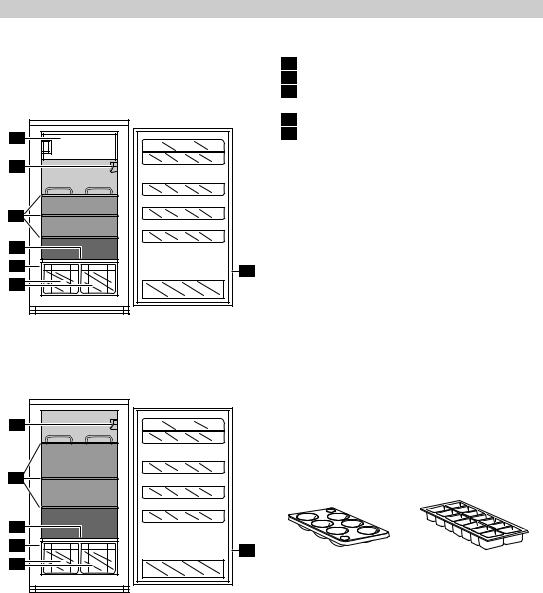
DEUTSCH |
14 |
Produktbeschreibung
Lesen Sie bitte vor dem Gebrauch Ihres Gerätes die Bedienungsanleitung sorgfältig durch.
BC184/18
BC118/18
6 |
7 |
1 |
4 |
5 |
2 |
BC219 |
BC155 |
7 |
1 |
4 |
5 |
2 |
3 |
3 |
Kühlraum
(zur Lagerung frischer Lebensmittel und Getränke)
1 Ablagen (z. T. in der Höhe verstellbar)
2 Obstund Gemüsefächer
3Kühlrauminnentür mit: (sofern vorhanden) verstellbaren Innentürfächern
4 Ausziehbarer Tauwasserabfluss
5Typenschild (neben dem Obstund Gemüsefach)
Gefrierraum (sofern vorhanden)
(markiert mit dem Symbol zum Einfrieren frischer Lebensmittel, zur Lagerung von Tiefkühlware und zur Herstellung von Eiswürfeln)
6 |
Gefrierraum |
|
Bedienelemente |
7 |
 Bereich geringe Kühlleistung
Bereich geringe Kühlleistung
 Bereich mit mittlerer Kühlleistung
Bereich mit mittlerer Kühlleistung
 Bereich hohe Kühlleistung
Bereich hohe Kühlleistung
Ausstattungsmerkmale, technische Daten und Bildmaterial können je nach Modell unterschiedlich sein
Zubehör
(sofern vorhanden)
Eierbehälter Eisbehälter
1x |
1x |
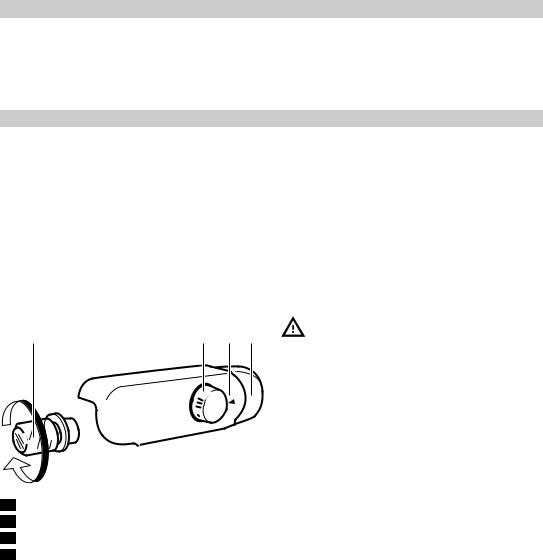
DEUTSCH
Inbetriebnahme
Das Gerät an das Stromnetz anschließen.
Die idealen Temperaturen zur Aufbewahrung der Lebensmittel sind bereits werkseitig voreingestellt (3-5/MIT).
Täglicher Gebrauch
Hinweise zur Benutzung des Kühlund Gefrierraums (sofern vorhanden)
•Verwenden Sie den Thermostatknopf, um die Temperatur des Kühlraums (oder beider Räume (modellabhängig) einzustellen, wie in Abbildung 1 gezeigt. Den Thermostatknopf auf stellen, um das gesamte Gerät auszuschalten.
stellen, um das gesamte Gerät auszuschalten.
Hinweis: Die Raumtemperatur, die Häufigkeit der Türöffnungen und der Aufstellungsort des Gerätes können die Innentemperaturen im Kühlund Tiefkühlraum beeinflussen.
Bei der Temperatureinstellung müssen diese Faktoren berücksichtigt werden.
D |
|
A |
|
C |
|
B |
Abb. 1
A Thermostatknopf
B Lichttaste
C Markierung für die Thermostateinstellung
DGlühbirne (siehe Anweisungen neben der Glühbirne)
Thermostat auf 1/MIN: Niedrige Kühlleistung Thermostat auf 3-5/MED: Mittlere Kühlleistung Thermostat auf 7/MAX: Hohe Kühlleistung Thermostat auf : Kühlfunktion und Beleuchtung ausgeschaltet.
: Kühlfunktion und Beleuchtung ausgeschaltet.
Die Lampe wie in Abbildung 1 gezeigt nach links herausdrehen.
Kühlraum
Das Abtauen des Kühlraums erfolgt vollautomatisch. Wassertropfen an der Innenrückwand des Kühlraums zeigen die automatische Abtauphase an.
15
Hinweis: Nach dem Einschalten des Gerätes sind 2- 3 Stunden erforderlich, bis die korrekte Aufbewahrungstemperatur für das Gefriergut erreicht ist.
Das Tauwasser läuft automatisch durch eine Abflussöffnung in einen Behälter, in dem es verdampft.
Gebläse (falls vorhanden)
Das Gebläse funktioniert automatisch. Der Lüfter sorgt für eine gleichmäßige Temperaturverteilung im Kühlraum und somit für eine optimale Konservierung des Kühlgutes und reduzierte Feuchtigkeit. Den Ansaugbereich nicht mit Lebensmitteln verdecken.
Das Gebläse dreht sich nur bei eingeschaltetem Kompressor.
Vorsicht! Das Kühlschrankzubehör darf nicht im Geschirrspüler gewaschen werden.
Gefrierraum (sofern vorhanden)
Dieses Gerät ist ein Kühlschrank mit -Sterne- Gefrierraum. Verpacktes Tiefkühlgut kann für die auf der Verpackung angegebenen Dauer im Gefrierraum gelagert werden. Beim Einfrieren frischer Lebensmittel darauf achten, dass sie nicht in Kontakt mit bereits eingefrorenen Lebensmitteln kommen. Die Menge frischer Lebensmittel, die innerhalb von 24 Stunden eingefroren werden kann, ist auf dem Typenschild angegeben. Angetaute Lebensmittel sollten nicht wieder eingefroren werden. Diese Lebensmittel müssen innerhalb von 24 Stunden verzehrt werden. Weitere Informationen zum Einfrieren frischer Lebensmittel entnehmen Sie bitte der Kurzanleitung.
Einfrieren frischer Lebensmittel
Geben Sie die einzufrierenden frischen Lebensmittel in den Gefrierraum. Vermeiden Sie den direkten Kontakt mit den bereits eingefrorenen Lebensmitteln. Zum Einfrieren einer der Darstellung auf dem Typenschild entsprechenden Lebensmittelmenge die oberste Schublade herausnehmen und die Lebensmittel direkt in das Fach legen.
Herstellen von Eiswürfeln (falls vorgesehen)
Die Eiswürfelschale zu 2/3 mit Wasser füllen und in den Gefrierraum stellen. Keine spitzen oder scharfen Gegenstände zum Lösen der Schale verwenden.
